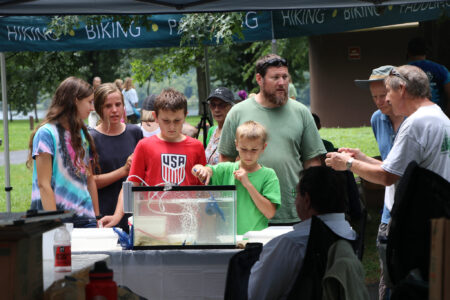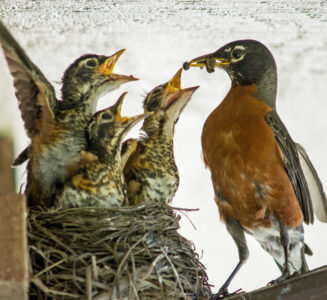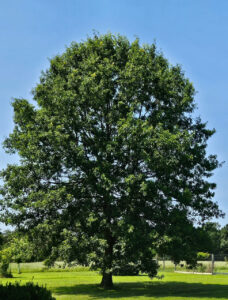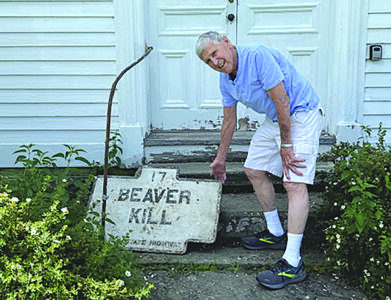Reflections in Nature: Many waterway names come from a variety of sources
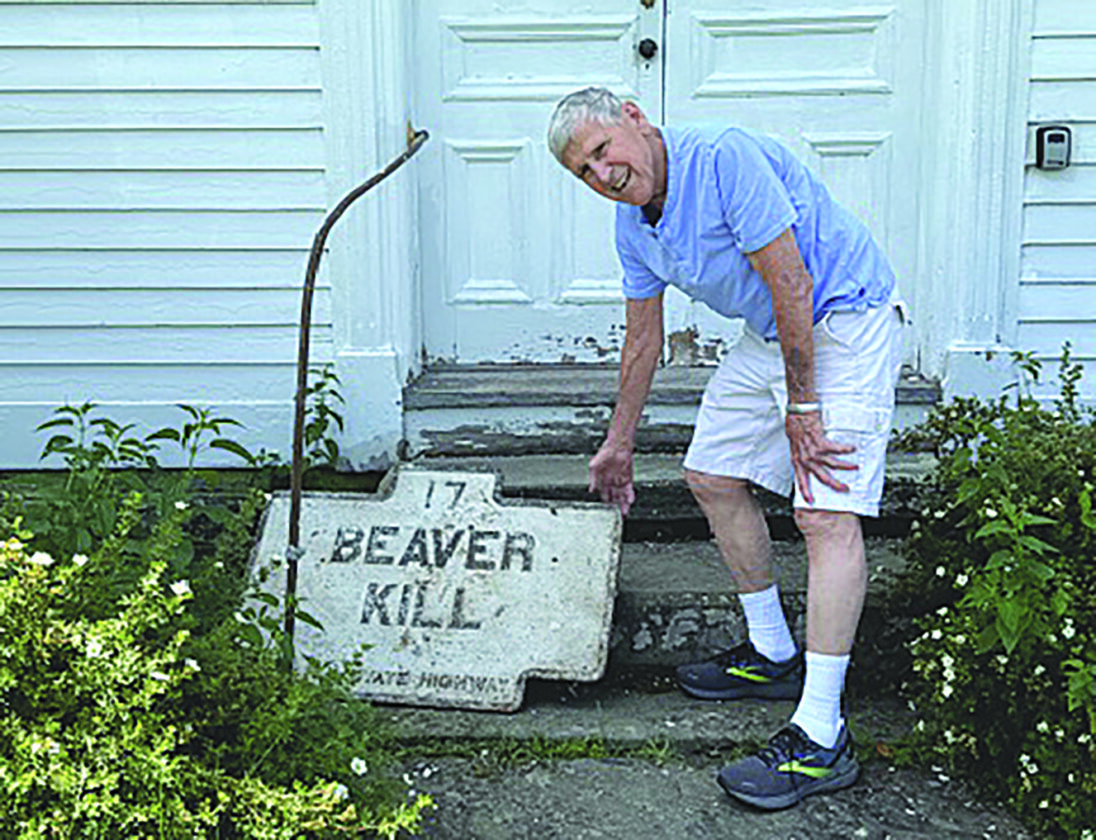
PHOTO PROVIDED Shown is Bill Bower, author of the weekly Reflections in Nature column, with a cast iron Beaver Kill sign he acquired. Bower returned the two Beaver Kill signs he had received to the Beaverkill Conservation Group.
Among my collection of outdoor antiques were two cast iron New York highway signs with the words Beaver Kill. The Beaver Kill is a well-known trout stream located in the Catskills of New York and there is also a small hamlet named after the stream.
I came into possession of these signs in a peculiar way. I had been putting on a program at the Lumber Museum in Potter County and had a large display of old items associated with my job as a game protector. One of the visitors to the museum approached me and asked if I would like to have a sign with the words Beaver Kil. Of course, I said yes.
It was not long before I had the sign in my possession. The sign was a large cast iron highway sign that had once been erected on the old Route 17 where the road crosses the stream. A few years later the same gentleman gave me a second sign.
I had these signs for more than 20 years when a friend told me he had recently gone fishing on the Beaver Kill and heard locals complaining that their metal Beaver Kill signs were disappearing. These metal signs, which replaced the cast iron signs, were placed along the roadside to inform travelers that they were crossing the famous Beaver Kill stream.
Last year Mary Alice and I were returning from our vacation in the Catskills when she spotted the sign Beaver Kill. We began following the Beaver Kill stream and came upon a covered bridge, which we crossed, and on the other side was a picnic area and a small building for the park officer. I told the officer about the signs in my possession, and he told me that they would be glad to have the signs returned.
From that day on, returning the two signs was on my bucket list. Last weekend our son visited to help with outside chores. We finished the list of jobs early and were looking for something else we could do when I saw the signs. Within a few minutes, Mark was texting the Beaverkill Conservation Group, asking if they would like the signs. They did and Mark loaded the signs in the trunk and off we went.
We found the town of Lew without any trouble and then the church where the Beaverkill Conservation Group was located. No one was there so we just unloaded the signs and took some pictures and left. I was so happy to be able to remove this chore from my bucket list.
Word origins have always interested me. I always thought that Beaver Kill must have been famous for its beaver population, however I learned the Catskill area was settled by the Dutch. The Dutch word kil, meaning bleak, chilly and cold, was historically used for small streams. therefore, many streams in the area ended with the word kill
This got me thinking about the names of rivers and streams in Pennsylvania. Many of our names of our waterways come from various sources, with many having Native American names. For example, the Delaware tribe (originally the Leni-Lenape) lived along the Delaware River, hence, the name. The tribe’s word for river was hanna, which influenced the name of the Susquehanna.
With the Dutch, French and English influence in Pennsylvania, many streams and towns have names such as Bushkill and French Creek.
Among the contiguous 48 states, Pennsylvania has the greatest total mileage of streams. These streams empty into six major watersheds — Susquehanna, Delaware, Genesee River, Potomac River and Lake Erie — all of which end up in the Atlantic Ocean. The sixth is the Ohio River, which heads in an entirely different direction.
The Ohio River, with its major tributaries, consists of the north flowing Youghiogheny, Monongahela and the south flowing Allegheny. The Ohio empties into the Mississippi River, which drains the entire central United States and ends up in the Gulf of America, which itself is open to the Atlantic.
In Pennsylvania, what a waterway is called depends on where you live, with the Dutch having a heavy influence on the name. In some areas, a small stream is called a brook, which comes from the Dutch word broek, meaning swamp or marsh. Most waterways with the name brook (such as Springbrook) are found in the glaciated area of Northeast Pennsylvania.
A small stream is often called a creek (such as Pine Creek) and is from the Dutch word kreek, meaning creek.
Small waterways are also called streams, which is from the prehistoric Germanic word straumaz, meaning something that flows. This gave us the Dutch word stroom, which became our word stream.
There are also waterways with the name of brook (such as Sunnybrook) which is believed to have come from the Germanic word bruch, meaning swamp.
Our word river comes from the Latin word ripa, which means riverbank, and from rivus, meaning the water itself.
Here, in Northern Pennsylvania, we have many waterways ending with the word run such as Slate Run and Trout Run. Our word run comes from the Old English word rinnan, meaning small, strong, flowing stream. Follow most of these run to their origin and you will find that most of them begin with a spring.
Our word spring can be traced back to the Indo-European word sprengh, which means rapid movement. Thus, in old English, the word spring means a place where a stream rises from the ground.
If you visit New England, you will find that lakes are called ponds. Our word pond is historically the same word as pound, meaning an enclosure. The difference between the two was established early on with the common denominator that a pond was originally used for keeping fish.
We also have many lakes in Pennsylvania. Our word lake comes from the old French word lac, which came from the Latin word lacus, meaning a hole or basin, when the hole filled with water its name remained.
Bill Bower is a retired Pennsylvania Game Commission Wildlife Officer. Read his blog and listen to his podcasts on the outdoors at www.onemaningreen.com.

